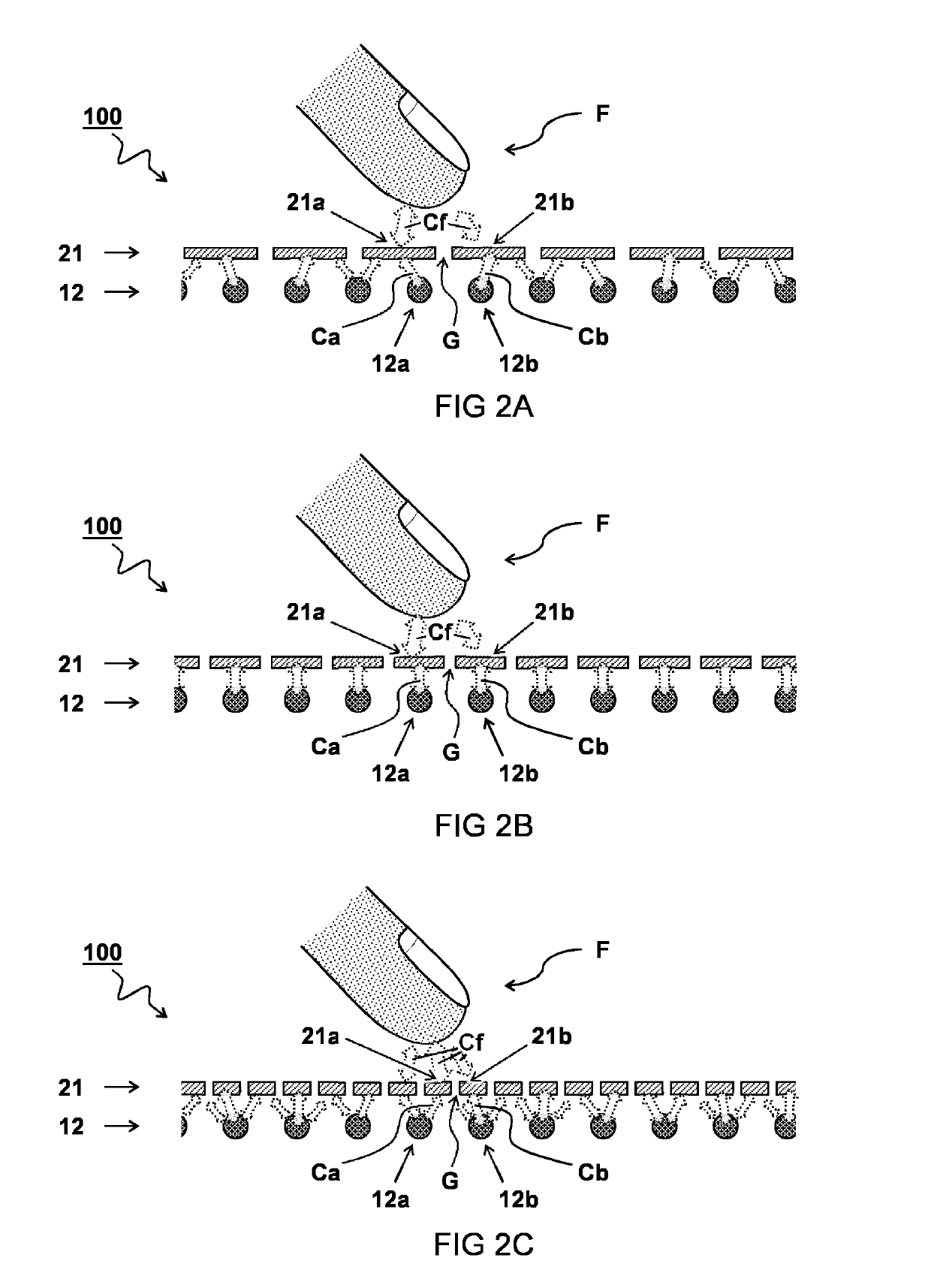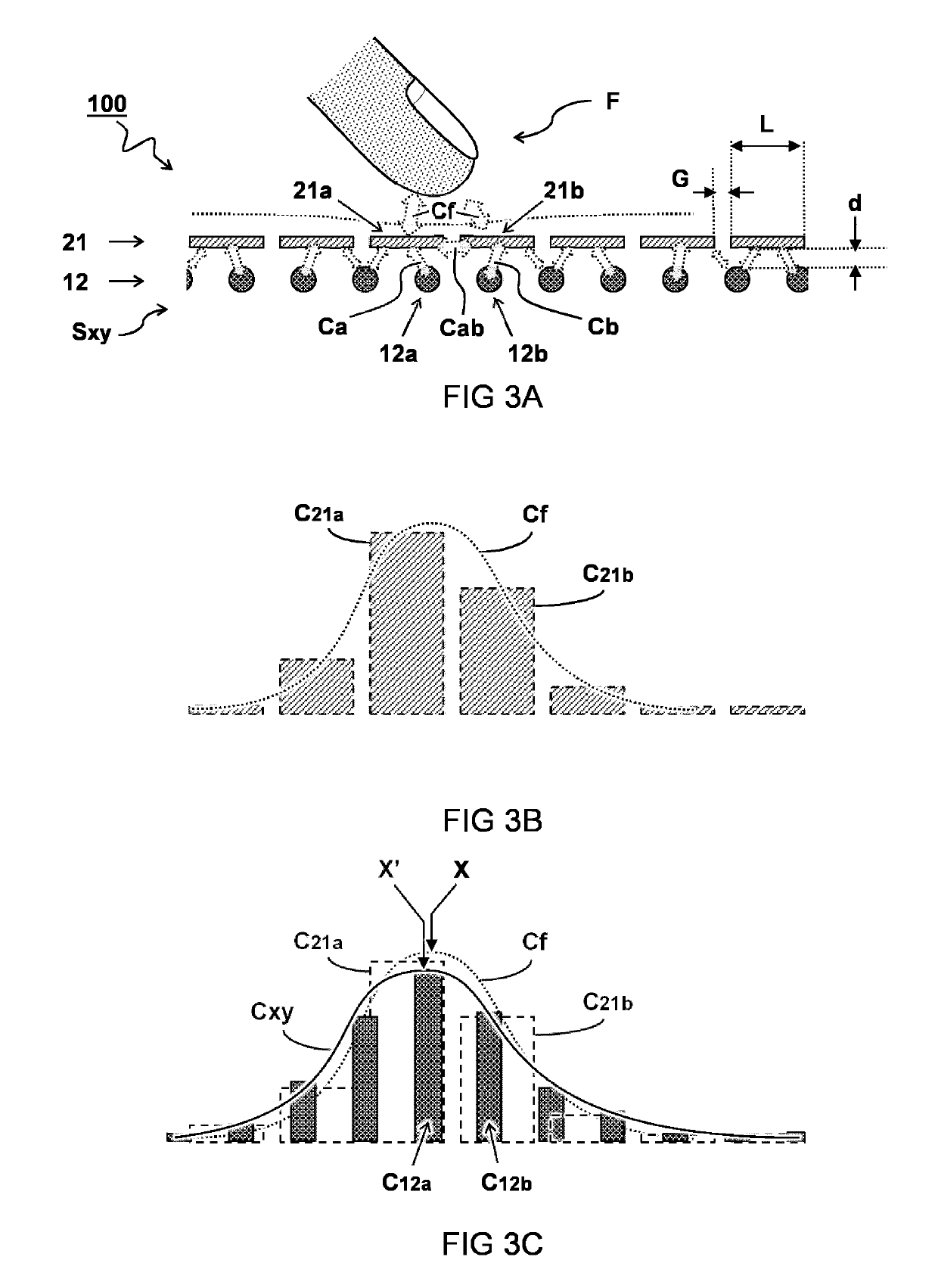Capacitive touchscreen mirror device and mehtod of manufacturing
a capacitive touchscreen, mirror device technology, applied in the field of mirrors, can solve the problems of negating the function of capacitive sensors, difficult to replicate the mirror experience, and relatively inconvenient operation of touch technologies, so as to achieve reliable position detection, no loss or degradation of functions, and minimal or no loss of sensing capability.
- Summary
- Abstract
- Description
- Claims
- Application Information
AI Technical Summary
Benefits of technology
Problems solved by technology
Method used
Image
Examples
Embodiment Construction
[0032]The present invention relates to a mirror device that provides additional user-interface functionality. In particular, a method to combine a metallic mirror surface with capacitive touchscreen functionality is described. The mirror device comprises a conventional thin metallic layer, for example of aluminum or silver, to provide the mirroring function. The mirror device further comprises a touchscreen to provide user-interface functionality. The touchscreen may have additional display functionality as is known in the art.
[0033]Generally, touchscreen displays can include a capacitive sensor grid that determines the presence or the location of an object such as a finger proximate to the sensor grid. Signals sensed by the capacitive sensor grid may change with the presence and location of a fingertip relative to the sensor grid. For example, the capacitive sensor grid may comprise a matrix of rows and columns of electrodes that detect changes in capacitive coupling caused by the ...
PUM
 Login to View More
Login to View More Abstract
Description
Claims
Application Information
 Login to View More
Login to View More - R&D
- Intellectual Property
- Life Sciences
- Materials
- Tech Scout
- Unparalleled Data Quality
- Higher Quality Content
- 60% Fewer Hallucinations
Browse by: Latest US Patents, China's latest patents, Technical Efficacy Thesaurus, Application Domain, Technology Topic, Popular Technical Reports.
© 2025 PatSnap. All rights reserved.Legal|Privacy policy|Modern Slavery Act Transparency Statement|Sitemap|About US| Contact US: help@patsnap.com



